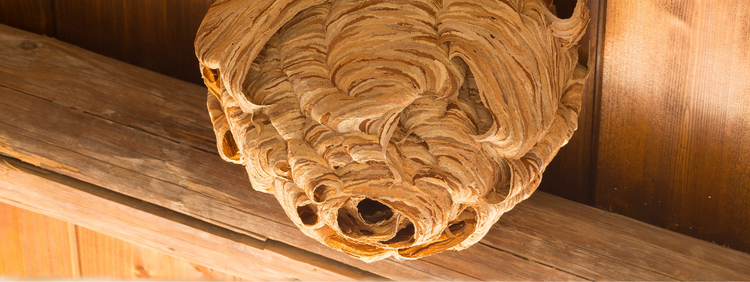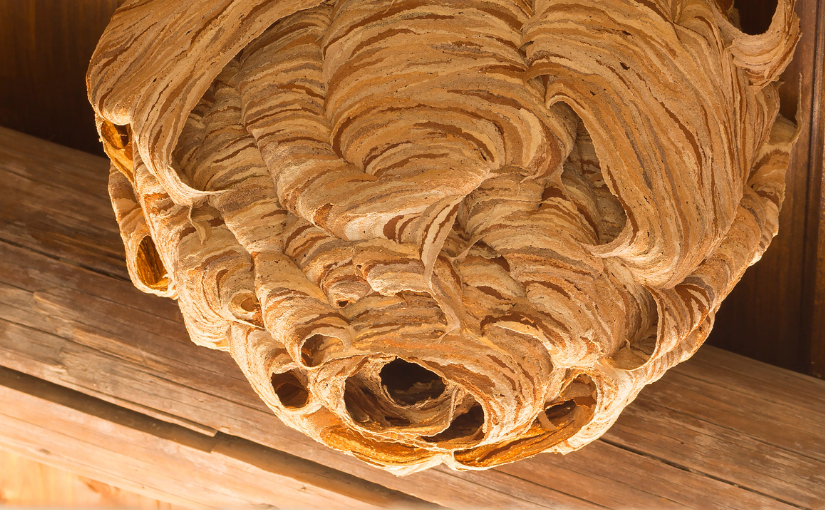
Wasps usually construct their nests above ground in higher locations, like around rooflines or in tree canopies. The nests have a grayish-brown colour and resemble paper lanterns. While it is okay to inspect your property for wasp nests, you should always stay close because wasps are defensive and aggressive creatures. It is best to contact wasp pest control in Hamilton to schedule wasp removal.
Unlike bees, wasps do not lose their stingers and can repeatedly sting prey and threats. Some people have a lethal allergy to wasp stings, and even those who do not have an allergy can develop one after several stings.
Common Locations of Wasp Nests
When looking for a wasp nest, you can usually follow the wasps. Nests usually only have one opening, so all the comings and goings of the population occur through the hole at the base of the nest.
You must be cautious when looking for a nest because the insects are defensive of their home. Keep your eyes open and move slowly. If you find a nest, keep your distance and ensure to let others know where it is. Call a residential pest control service to deal with the wasps.
Wasps are not overly picky about where they establish their nests, but some locations are more common than others. You should check four areas around your house and property if you suspect an infestation.
1. Overhangs
Wasps prefer cover for their nests, so it is common to find structures positioned under overhangs. The overhangs can be naturally occurring, like tree branches, or manufactured, like eaves.
The insects usually build their nests under similarly colored objects to aid in camouflage. While wasps are aggressive, they are also prey to many other bugs. Some of the most notorious predators of wasps include the following:
-
- Spiders
-
- Dragonflies
-
- Praying Mantis
-
- Centipedes
-
- Beetles
2. In Houses
Wasps will build nests inside houses. They usually build their nests in attic spaces or wall cavities, places undisturbed by people.
A house is a suitable shelter because it provides warmth and protection against the elements. Homes usually provide a climate-controlled environment throughout the year, which is beneficial in colder winter months.
While wasps usually don’t stay in a single nest for more than a year, if a house provides adequate shelter and food, the insects might return again and again. You can deter wasps by eliminating access to food sources like garbage and pet food by using appropriate containers.
3. In Sheds
While a shed does not often provide the same level of climate control as a house, it still provides protection against predators and the elements. A neglected shed is even more perfect because the wasps can feel safe without human interruption.
If you have a shed or other outdoor structures on your property, it is crucial to maintain them. Take time at the change of seasons to inspect the structure’s doors, windows, foundation, and seals. You want to limit an insect’s access to the interior of the shed as much as possible.
4. Roof Edges
Like tree canopies, roof edges can provide coverage and protection for the nests. If a house is brown or a similarly earthy colour, wasps will use the siding or roofing materials as camouflage. Also, roof edges are often weaker areas of the roofline, meaning there might be access to the attic space of the home.
Residential Pest Control Services in Hamilton
If you have or suspect a wasp nest on your property, call a local pest control service. Contact Truly Nolen Canada about wasp control and removal and schedule a property inspection.
